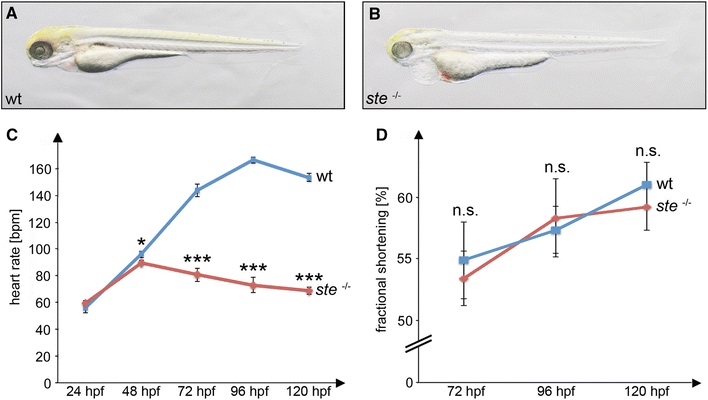Fig. 1
Effects of the ste mutation on cardiac function. a, b Lateral view of wild-type (wt) (a) and ste−/− mutant (b) embryos at 72 h post-fertilization (hpf). ste−/− mutants (b) develop blood congestion at the cardiac inflow tract and a pericardial edema. c Heart rate at different time points in ste−/− mutants (red) and wild-type littermates (blue). Bradycardia in ste−/− mutants starts at 48 hpf and becomes more severe during further embryonic development. d Ventricular fractional shortening is unaffected in ste−/− mutants compared to wild-type littermates at 72 hpf (53 ± 2.2 vs. 55 ± 3.1 %, n = 5, p = 0.7096), 96 hpf (58 ± 3.2 vs. 57 ± 1.9 %, n = 5, p = 0.7956) and 120 hpf (59 ± 1.9 vs. 61 ± 1.8 %, n = 5, p = 0.5586)

